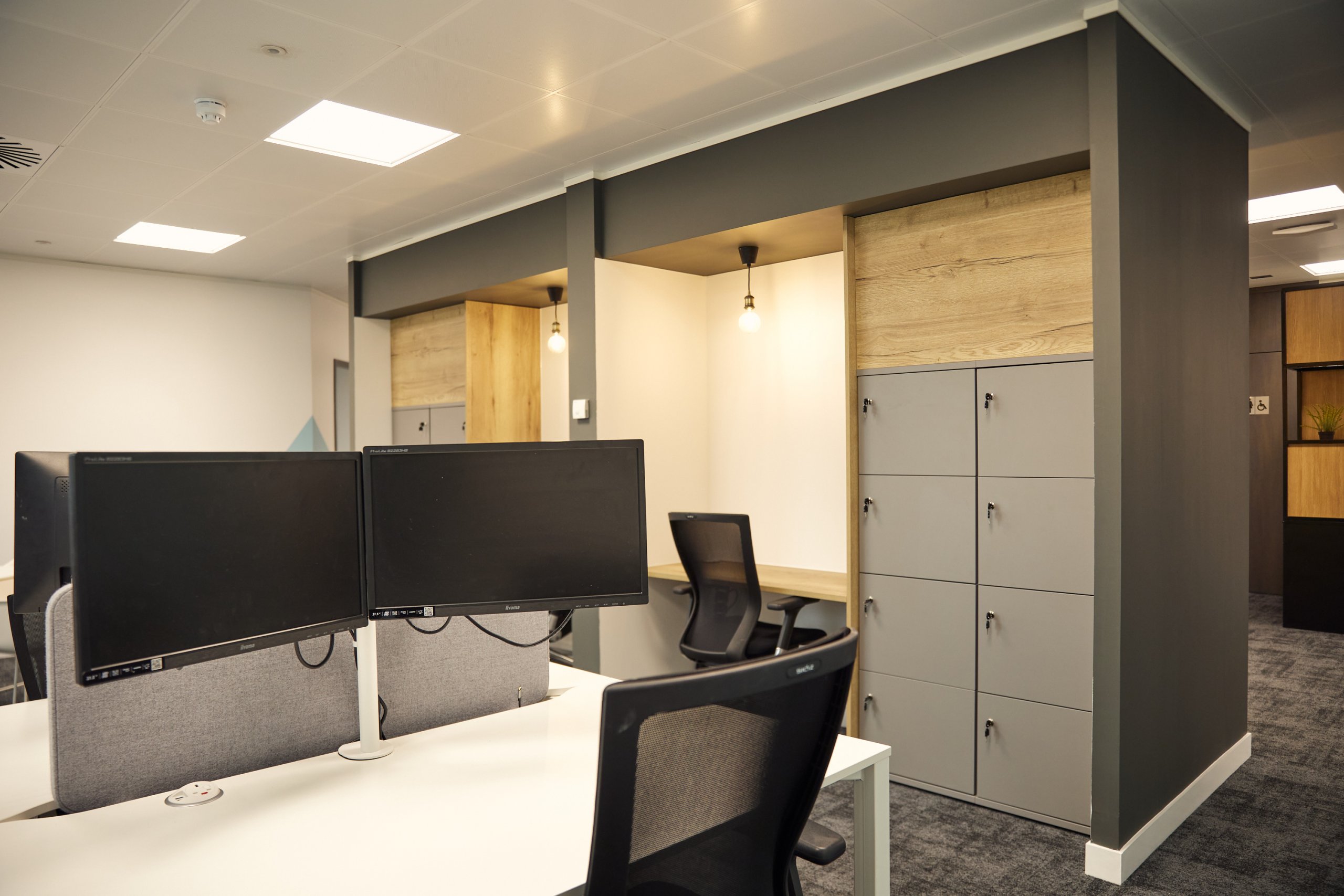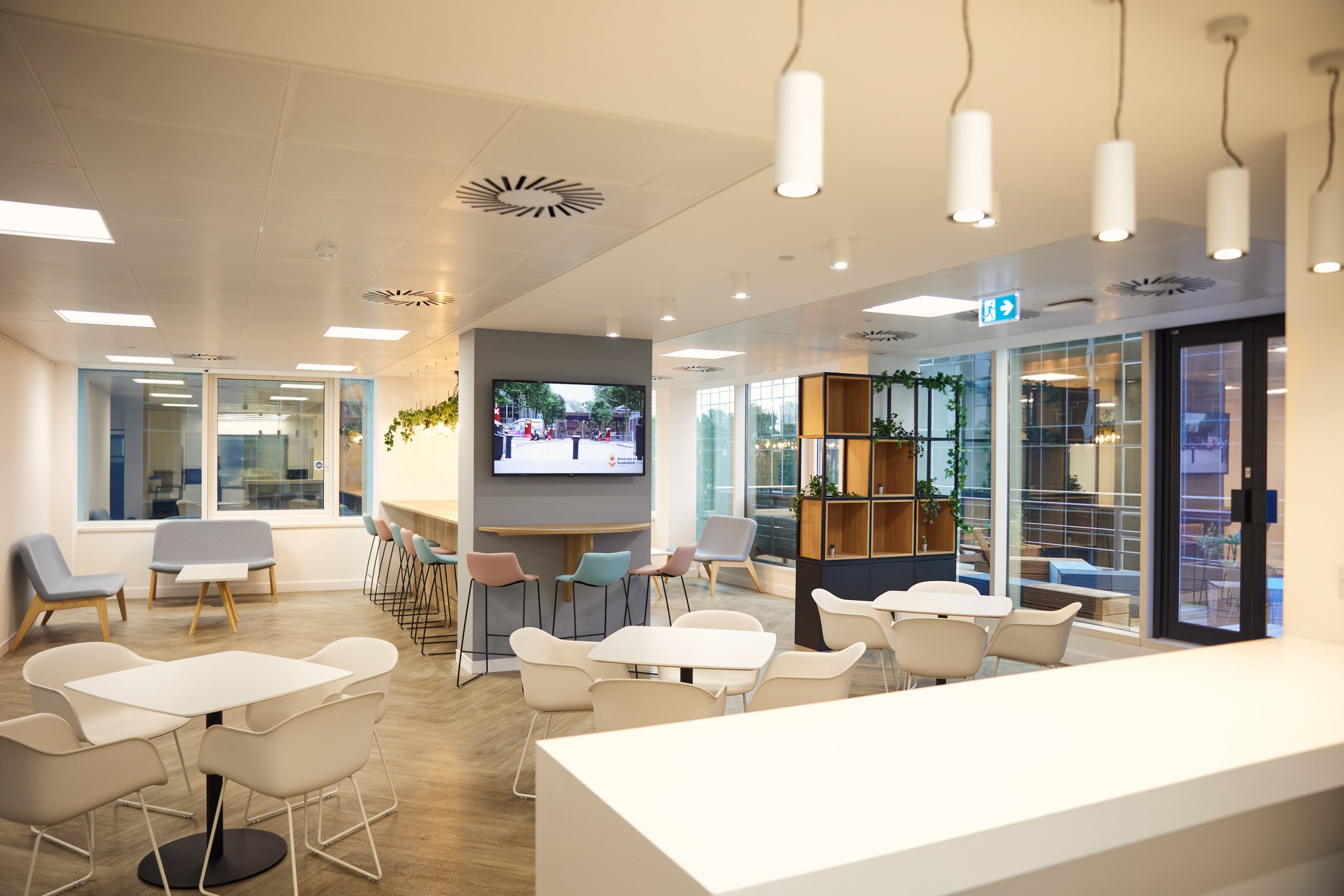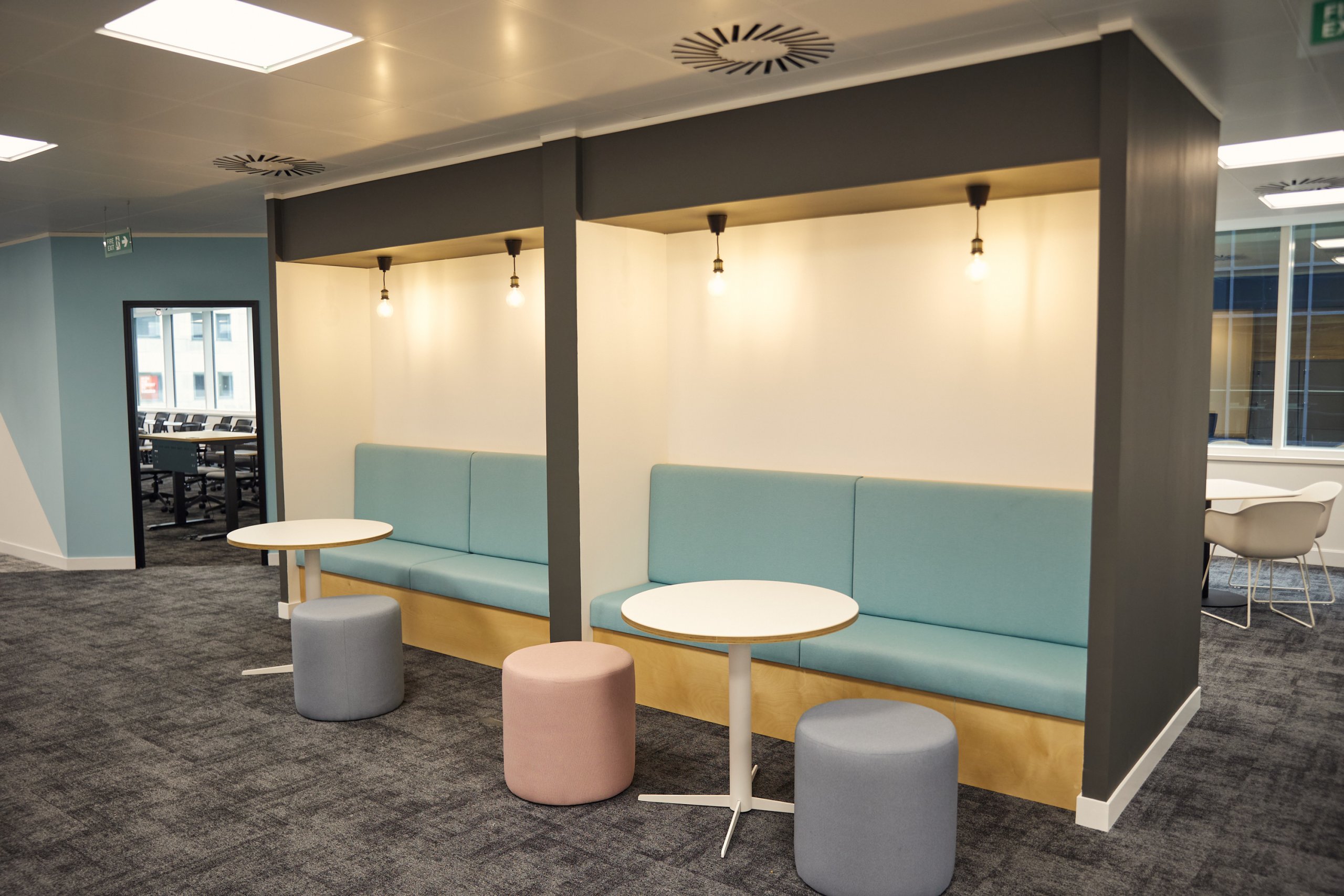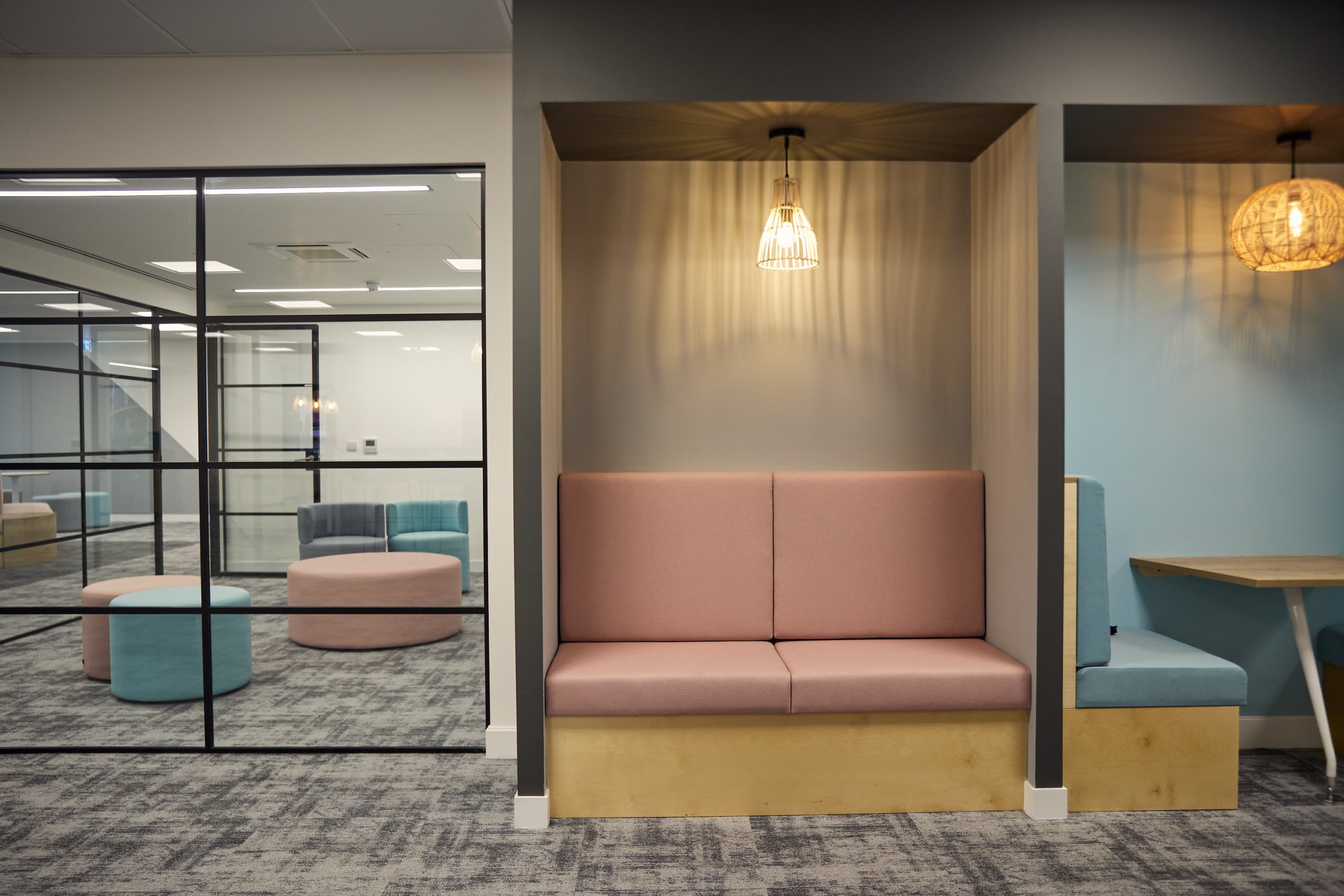When it comes to designing an educational purposes, there are a wide range of design choices that need to be considered during the process. Primarily, these design choices need to be made with students in mind and need to be able to accommodate the different working styles of each individual.
As well as being functional, it is also important that spaces like this are able to promote a positive mental mindset to motivate students and faculty, whilst also allowing them to focus too when the hard work comes around.
In this blog, we’ll give you our best tips on the approach you should take when refurbishing or designing a working space for an educational environment.
The library is now no longer the central hub where students and staff go to work. Instead, some students now prefer coffee shops, or busy lobby’s where they can be amongst the hustle and bustle of daily life.
As such, when designing your educational facilities, it is important that you make electrical amenities accessible at all times. Plug sockets and USB ports are extremely important as many people will likely need to plug in their laptops or phones to do their work.


It is also important to create an environment where students feel welcomed too. Especially where new students can find acclimatising to an academic lifestyle challenging, making them feel calm and embraced in their new community can help to mitigate this feeling.
Consider open plan layouts where students can sit with one another and interact. This will help to avoid students feeling isolated and confined in their space. In terms of furniture, use large tables that will seat multiple individuals at once which again will help to push communication amongst peers.
You could also look to incorporate social areas that will allow students to interact in a more relaxed setting too during study breaks is an alternate design option too.
Using relaxed furniture like sofas and implementing recreational activities such as pool tables will help to create a sense of community and will help students to feel at ease whilst there.
Although it is important to create social areas, it is equally important to create agile working areas that will cater to different working styles too.
Much like in a professional setting, students will naturally be expected to work in groups during their time studying. To facilitate this type of working consider installing co-working booths and areas where groups can take themselves to work.
Grouped seating and large tables will help to support communication amongst the students and allow them to share creative ideas regarding their work. As well, allocated areas for

group work will help to minimise any noise disruption for those students who prefer an individual working style.
Alternatively, you can also look to create breakout zones for those students who do prefer working alone. Quiet booths are a great way to do this, and signals to other students that these individuals do not want to be disturbed.

Your learning environment should help to support students achieve their best academic performance. You may have a highly optimised layout, but with a poor design, it can be difficult to create this work ethic.
A way in which you can look to instil this mindset into students is through colour scheme. Though many businesses and academic institutions tend to think they need their brand colours intertwined throughout their buildings, this is actually not the case.
It is beneficial to have them in common areas such as receptions and entrance areas so visitors know where they are, but
elsewhere, look to use colours that are relaxing to students and those that will help them to focus. Key colours that would be great to use are light blues, subtle pinks, natural green shades and potentially small accents of black, all of which promote calm feelings but also a focused mindset.
If you’d like to learn a little more about colour psychology in office design, take a look at our previous blog here.
At Building Interiors, we are experts in understanding the design requirement of educational settings. In recent years we executed a first-class new learning environment for Sunderland University’s London Campus, which included lecture theatres, breakout spaces, agile seating solutions and collaboration zones.
If you are considering a complete new refurbishment for your educational facilities, or would just like to speak to one of our team about other services we offer, please call us on 0113 388 6522, or contact us here.